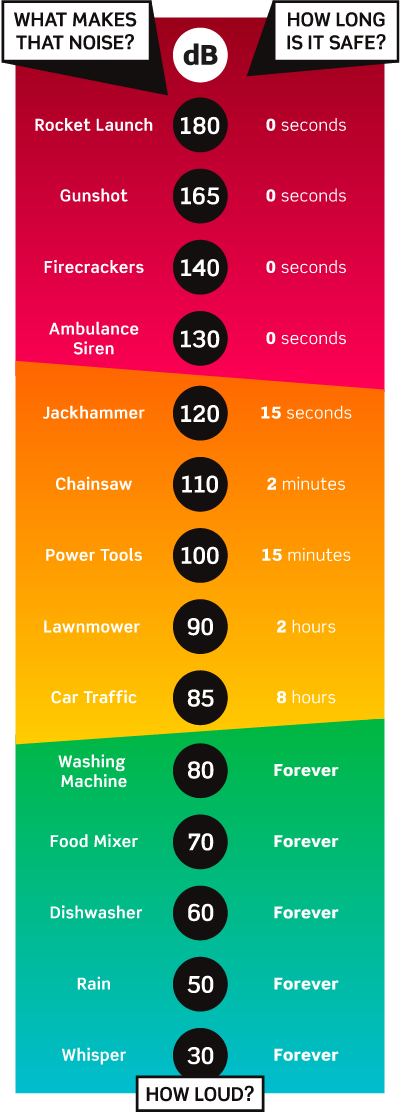What are Decibels and how they impact the ear
A Sound Wave is simply air moving at a frequency and they are the product of objects vibrating and causing the air to move. Sound waves include all the frequencies and all the volumes. The range of human hearing is often considered to be 20 Hz to 20 kHz. However it is far more sensitive to sounds between 1 kHz and 4 kHz. For example, listeners can detect sounds as low as 0 dB SPL at 3 kHz, but require 40 dB SPL at 100 hertz (an amplitude increase of 100). Sound exists anywhere where air is present. We can measure its volume to have an objective perspective of what is too loud and protect us, as some sounds are not safe. In fact, loud noise can be very damaging to hearing. The level of noise, where a person is in relation to the noise (distance to the noise), and the amount of time they listen to it can all result in risk for hearing loss.
Decibel MetersThose devices are quite useful since they measure the volume of a sound wave at a certain point in space. We must remember that typically, sound is multi directional. This means that the wave is propagating in a three dimensional reality and its power will decrease significantly every time we double the radius from the source. This occurs because the air carrying the sound has multiplied exponentially. Mathematically, when we double the radius of a sphere, the enclose volume is about eight times larger than the original sphere. In sound waves his means that the same amount of energy is now divided in 8. This apparent relief is counter-intuitive because we need to measure the real dB level at a point to understand what kind of danger we are exposing our ears to.
Sound is measured in units called decibels (dB). For the reasons stated above, a scale has been created that behaves in a logarithmic fashion. On the decibel scale, the level increase of 10 means that a sound is actually 10 times more intense, or powerful. This is computing the pressure that the sound waves are excreting at a specific point in space.
The chart on the right compares the exposure times that our ears can tolerate at each level. Of course, this is not a rule set in stone and we recommend to err on the side of caution. Remember that those measurements can change based on a lot of variables and that those charts do not represent the complete absolute reality. However, it is important to observe and keep in mind that the amount of time that we expose ourselves to a level of sound is the the game changer and how it can cause damage to our ears. For example the dB level of a Lawnmower at 90 dB can be tolerated for 120 minutes while a 10 dB increase to a Power Tool operating at 100dB would do damage in only 15 minutes. For this reason, we advise to protect your ears and be aware of the levels of sound you are exposed to.
When you subscribe to the blog, we will send you an e-mail when there are new updates on the site so you wouldn't miss them.



